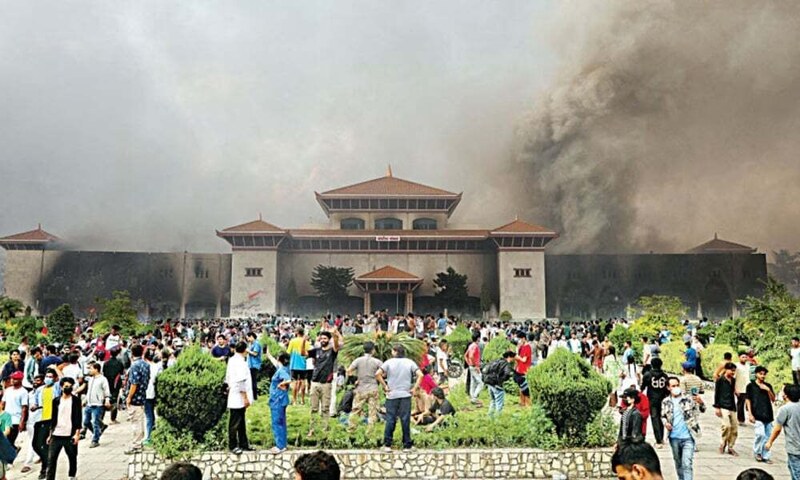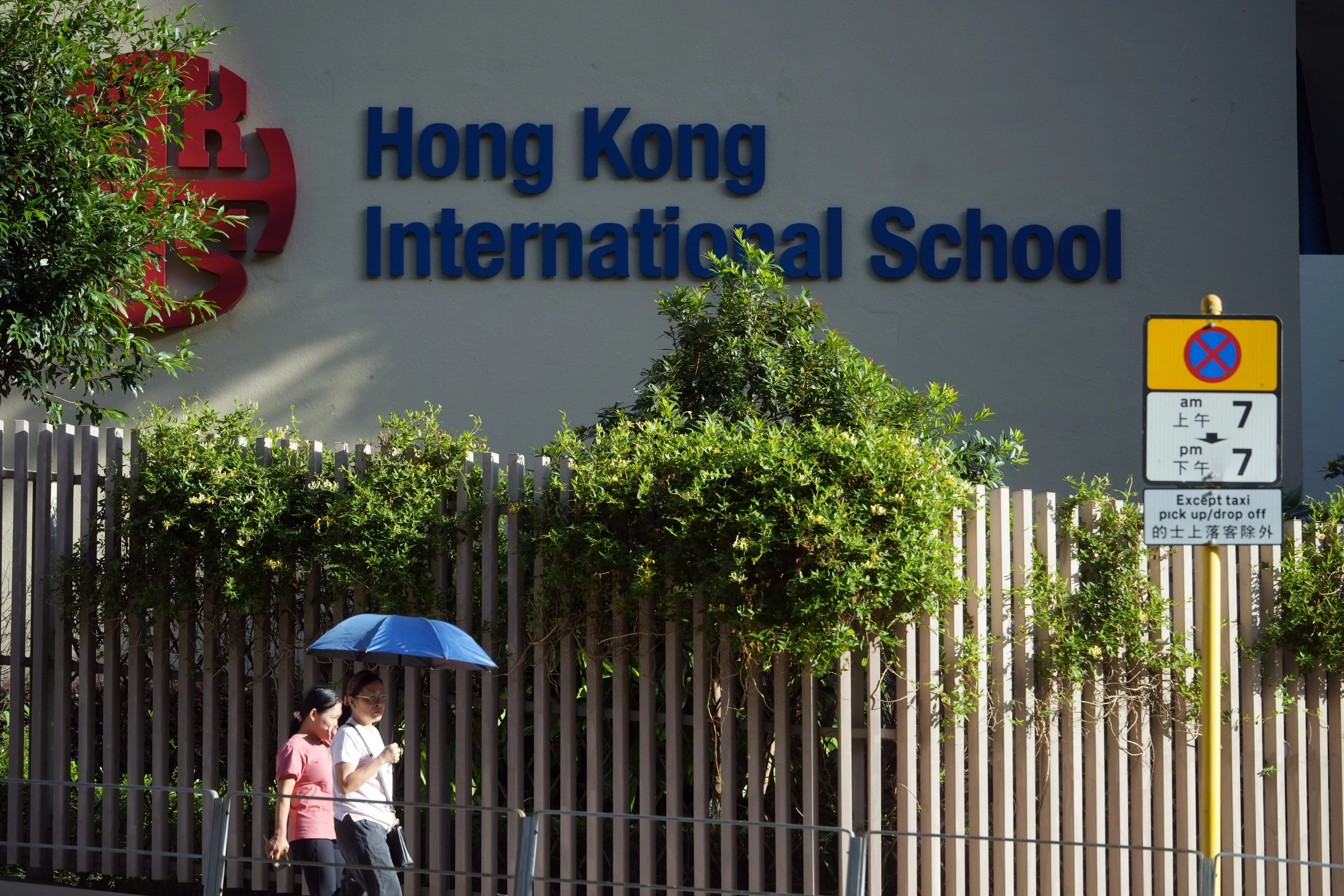By Dr Saulat Nagi
Copyright brecorder

AIn Macbeth witches smelling trouble cry out, “Double, double toil and trouble/Fire burn and caldron bubble”. Ironically, the leaders don’t see the warnings given by the people on whom they rule. When they say they are our people, Marx noted, they sound like a king who says my horses.
After Sri Lanka and Bangladesh, Nepal too faces mass upheaval and is in throes of same fate. Its prime minister lacked spine to stand against the movement led by the students— instrumental in ousting the governments in all three countries—has resigned and probably fled the country.
The spontaneous uprising is not new. However, one must observe the forces acting behind the phenomenon. If the organic social class—the proletariat—backed by an organized revolutionary party directs the struggle it can overthrow the old decadent order to replace it with a new progressive system.
The uprising of this kind doesn’t stop at passive revolution/restoration but succeeds in winning power.
The spontaneous uprisings led by students are destined to fail. The biggest student uprising took place in France in 1968. It almost won the day, but the Communist Party froze at the decisive moment, consequently the struggle to overthrow through revolutionary means culminated in a missed opportunity.
Since then, all student-led uprisings have a dubious character. The colour revolutions in Ukraine, Tunisia, Egypt, Libya, Syria and in several other countries were hijacked by the imperialist powers. In Ukraine the ouster of Victor Yanukovych, the Ukrainian president was made possible by the direct intervention of the US. Victoria Nuland—the US secretary of State— in collaboration with the Bandera group of Nazis, led the charge against an elected president. Later, it was proved by her taped conversation with the US ambassador in Ukraine.
Imperialism has long overthrown defiant governments: Arbenz, Sukarno, Allende, Nkrumah, Lumumba, Moralis, Sankara, Bhutto, to name a few. The list is long: countries that resisted imperialist dictates were destabilized, often to hand their precious assets to multinationals.
The current uprisings in three Asian countries have concrete socio-economic reasons. No uprising happens without humanity being pushed to the limit, as Camus says, to “live to the point of tears”. The internal contradictions of any society, if remain unresolved, they invite the foreign interference. But before we analyse the reasons behind the uprisings, especially of Nepal, we must remember that inherent anarchy integral to capitalism overwhelms the temporo-spatial spaces. One crisis leads to another one. While leaving one country into chaos, it moves to the other one.
Not only the countries of global South but the global North— France, Italy, and even Germany — are afflicted by capitalist anarchy.
In February 2025, Micheal Roberts, a Marxist economist wrote, “the US economy has a ‘whiff of stagflation’. ‘Stagflation’ is when national output and employment stagnate or rises only very slowly and yet price inflation continues to rise and even accelerate”. This is against the Keynesian theory, which states otherwise.
The crisis of realization of capital is deepening, and the US seeks to resolve it through wars— by supplying ammunition to Israeli genocide in the Middle East, by putting Venezuela to sword, forcing Europe to buy its oil and ammunition to supply Ukraine and preparing for confrontation with China, and waging tariff wars with almost every country of the world.
Critics argue that Nepal, Sri Lanka, and Bangladesh were punished for ties with China and the Belt and Road Initiative (BRI). Countries under the control of peripheral capitalism remain amenable to economic crises which culminate in revolts. All three countries share common features. Uneven development of capitalism and expropriation of the western powers have left them backward, agrarian, and largely non-industrial with minimum surplus to avert impending economic crisis. They have to seek bailouts from the IMF and are vulnerable to India’s influence—exercised both for itself to act as counterweight to China and for the US.
When student-led upsurge toppled the Nepal’s premier—a member of United Communist Party (ML)—the critics’ emphasis was on the failure of socialism rather than on the analyses of the socio-historic conditions of Nepal. Nepal is a small country with 81% people believing in Hinduism. The king was revered as Vishnu’s incarnation. The caste system is deeply entrenched in society. Though called the “roof of the World” Nepal is one of the poorest countries of the world. Tourism, a few agricultural products, and textile are its main exports. Yet the largest contribution comes from the expatriate unskilled workers exploited by the Middle Eastern sheikdoms.
For the majority of the leftwingers, Nepal gained importance, when local Maoist influenced by Indian Naxalites started an uprising under the leadership of a teacher-turned-revolutionary, Pushpa Kamal Dahl known as Prachanda. The revolution could not succeed, for the balance of force was neither favourable to the left nor tothe right, a situation, which Gramsci alludes to as Caeserism. Prachanda was forced to make a compromise with the forces of right, the so-called Communist Party and the Nepali Congress. They went into elections, and the ‘restoration’ was restored.
On a positive note, the bourgeois democratic revolution overthrew the king who was backed not only by India but by China and Pakistan. The IMF picked Shaukat Aziz — the fly-by night messiah — offered military help to King Gyanendra. India sent a former prince of Kashmir to bail out the king. China sent some renegade refugee Maoist settled in Tibet to assist the regressive kingdom facing its doomsday.
The inevitable happened. The country became a democratic republic, and the only Hindu state in the world became a secular state. The uprising and the socialist slogans –especially land reforms — raised new hopes. But the failure of the revolution absorbed Maoist in the old order.
Gramsci has already warned of this danger, “the Socialist party is not a sectional but class organisation… It cannot enter into direct or indirect competition for the conquest of the state without committing suicide, without losing its nature…”
Before Gramsci for whom bourgeois parties are “coachman flies”, Rosa Luxemburg dismissed the possibility of an alliance between socialists and the capitalist parties.
“The entry of a socialist party into a bourgeois government” Rosa Luxemburg says, “is not…. a partial conquest of the bourgeois state by the socialists but a partial conquest of the socialist party by the bourgeois state”.
This is precisely what happened in Nepal, which lacked material conditions for building socialism in a backward country. One cannot take the example of the Soviet Union and China. The Soviet Union had a large proletariat, which started the solidarity movement from Petrograd much before Lenin’s arrival from Finland. The communes already existed to replace the old system. Under mass pressure Kerensky resigned, and Lenin assumed the power, which, according to him, “was lying on the street”.
In Nepal, the Maoists even failed to carry out the land reforms. Corruption integral to the capitalist system seeped in, proving that if the whip with which people are flogged is named as socialist, it is still a whip, and people will hate it. “A desert with cluster of tall palms is still a desert” Gramsci says, “indeed it is a characteristic of desert to have small oasis with cluster of tall palms”.
Today Nepal has a new premier—a former Supreme Court justice installed by army. But no change awaits the people. “Ignorance is a demon” Marx warned, “and we are afraid it will yet play us more than one tragedy”. The old structure cannot develop the productive forces any longer. The Nepali Jacobins have brought the country to its limits. A shift to industrialization can help but who will bell the cat?
Copyright Business Recorder, 2025



